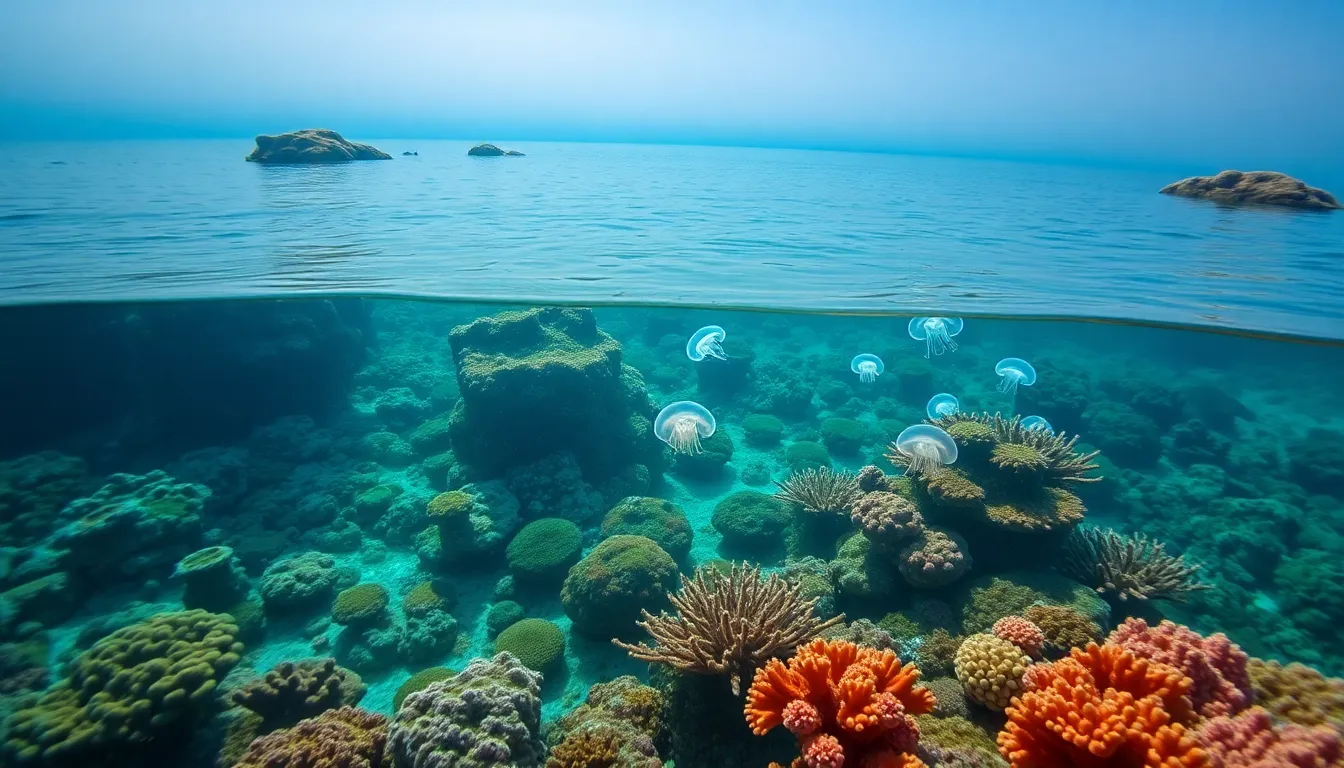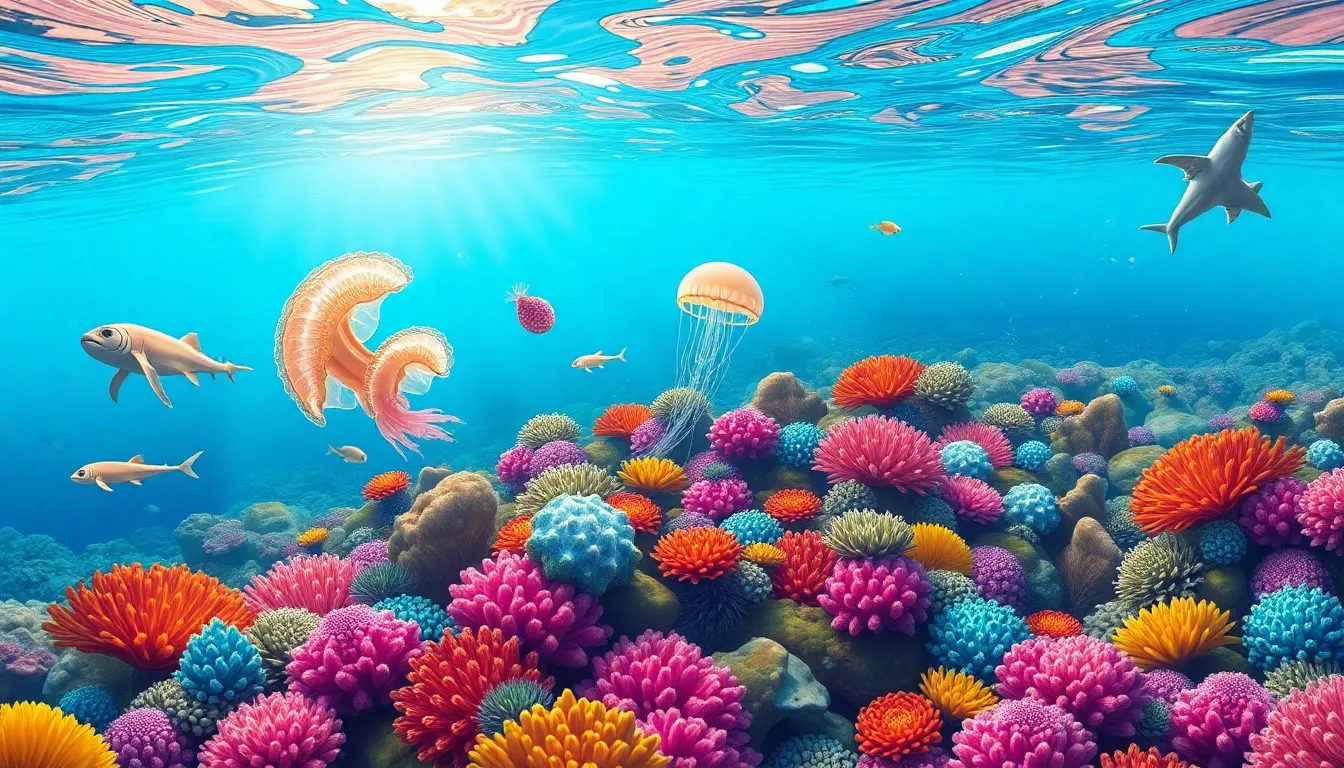Dive into the depths of the Safukip Sea, where the bizarre and the wonderful collide in a splash of color and chaos. This underwater wonderland is home to some of the weirdest creatures you’ll ever encounter, proving that Mother Nature has a wild sense of humor. From fish that look like they’ve just come from a sci-fi movie to mollusks that could star in their own reality show, the Safukip Sea is a treasure trove of oddities waiting to be discovered.
Weird Animals in The Safukip Sea
The Safukip Sea features a vibrant ecosystem that captivates marine enthusiasts and researchers alike. Known for its unusual marine life, this body of water showcases a diverse range of species, many of which possess striking characteristics. Scientists categorize these organisms as adaptations to their unique environment, leading to fascinating evolutionary traits.
Coral reefs dominate the underwater landscape, providing habitats for various creatures. Colorful corals, including brain and staghorn varieties, flourish, creating intricate networks for fish and invertebrates. Each reef hosts numerous species, making the area a hotspot for biodiversity.
In addition to vibrant corals, the fauna includes oddities like the translucent sea cucumber and the bizarre-looking goblin shark. These species embody the strange adaptations found in the Safukip Sea, capturing the imagination of those who study them. Observers often report encounters with glowing jellyfish that illuminate the depths, further emphasizing the sea’s surreal ambiance.
The water temperature typically hovers around 75°F (24°C), contributing to the thriving ecosystem. Nutrient-rich upwellings promote plankton growth, sustaining larger marine life. With currents that support migration patterns, various fish species travel through the area, creating dynamic interactions among organisms.
Research initiatives continuously explore the Safukip Sea’s mysteries. Biologists conduct studies on its unusual inhabitants, aiming to understand the mechanisms driving their distinctive traits. Conservation efforts strive to protect this ecological treasure, ensuring that future generations can appreciate its odd and colorful diversity.
Unique Ecosystem

The Safukip Sea hosts a remarkable ecosystem full of strange and vibrant life. This unique marine environment nurtures an astonishing variety of species.
Climate and Geography

Temperatures in the Safukip Sea hover around 75°F (24°C). This warm climate creates ideal conditions for numerous marine organisms. Ocean currents facilitate nutrient upwellings, enriching the marine habitat. Shallow coral reefs flourish along the coast, providing essential shelter for diverse species. Coastal features include small islands and rocky outcrops, which enhance biodiversity. Similarly, deep-sea trenches harbor exotic creatures adapted to extreme pressure and darkness.
Biodiversity Hotspot
Home to over 500 distinct marine species, the Safukip Sea stands out as a biodiversity hotspot. Colorful coral formations provide shelter and breeding grounds for many organisms. The translucent sea cucumber filters nutrients while the goblin shark exemplifies unique adaptations in the region. Luminescent jellyfish paint the waters with their glow, mesmerizing onlookers and researchers alike. Additionally, ongoing efforts focus on cataloging new species and their roles in the ecosystem. This continuous exploration reveals the intricate connections among species and their environments.
Notable Weird Animals in the Safukip Sea
The Safukip Sea is home to a variety of remarkable and unusual creatures that intrigue marine biologists and enthusiasts alike. This section focuses on some of the most notable examples.
The Luminescent Jellyfish
Luminescent jellyfish inhabit the depths of the Safukip Sea, captivating onlookers with their glowing bodies. These jellyfish possess bioluminescent properties that allow them to emit light, creating a stunning display in dark waters. Scientists estimate that over 30 species thrive within this region, each exhibiting unique patterns and colors. Glowing tentacles trail behind them as they move gracefully, luring in unsuspecting prey. Notably, these jellyfish play a vital role in the marine food web, serving as important indicators of ocean health.
The Walking Fish
This region features the peculiar walking fish, known for its ability to traverse land. This finned marvel uses its pectoral fins to “walk” rather than swim, enabling it to navigate tidal pools and coastal areas. Known as the mudskipper, this animal can breathe through its skin and spend extended periods outside water. Additional adaptations help it thrive in a range of environments, showcasing resilience and ingenuity. Compared to other fish, it possesses a unique lifestyle, blurring the lines between marine and terrestrial life.
The Color-Changing Octopus
Color-changing octopuses display remarkable camouflage abilities, enabling them to adapt to their surroundings instantly. These cephalopods manipulate specialized skin cells called chromatophores, allowing them to shift colors and patterns in seconds. Researchers document numerous species inhabiting the Safukip Sea, showcasing striking variations in color and texture. This adaptive feature serves as a defense mechanism against predators and helps them sneak up on prey. Observers often find their swift changes enchanting, demonstrating the intricate connections within the ecosystem.
Conservation Efforts
Conservation organizations focus on protecting the unique biodiversity of the Safukip Sea. Various initiatives aim to establish marine protected areas to safeguard habitats essential for weird marine animals. Efforts include restricting fishing practices that threaten vulnerable species and promoting sustainable tourism that benefits both local communities and conservation.
Research programs involving scientists and marine biologists play a crucial role in monitoring species populations and their health. Tracking the impact of climate change on this ecosystem is vital since rising temperatures and ocean acidification threaten many inhabitants. Ongoing research also seeks to identify new species while understanding the ecological relationships between them.
Local communities actively participate in conservation actions. Their collaboration enhances awareness and education about the importance of preserving the Safukip Sea’s natural wealth. Community involvement also fosters a sense of ownership and responsibility towards their marine environment.
Policy-making influences conservation strategies heavily. Governments work with international organizations to establish regulations that protect marine life and habitats in the Safukip Sea. Legislation addressing plastic pollution directly benefits marine organisms by reducing debris threatening their existence.
International efforts contribute significantly to preserving this exceptional ecosystem. Programs funded by global institutions support conservation initiatives and research projects targeting the Safukip Sea. Partnerships between countries encourage shared knowledge and resources to enhance conservation impact.
Engaging the public strengthens conservation initiatives further. Initiatives like awareness campaigns highlight the importance of the Safukip Sea’s weird animals, sparking interest and support for their protection. Educational outreach fosters appreciation for the distinct marine life, motivating individuals to take action in conservation efforts.


